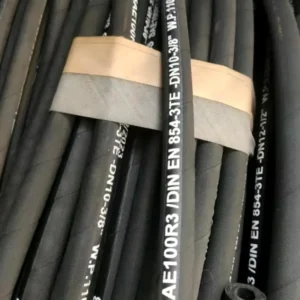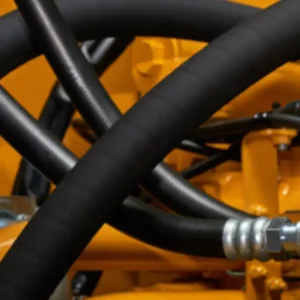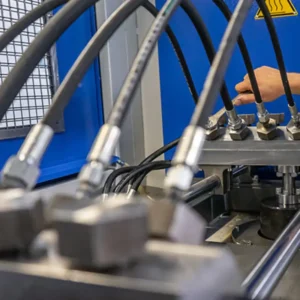Choosing the right hose size is a crucial decision, impacting both operational safety and cleaning efficiency. The “size” of a pressure washer hose refers to more than just the inside diameter; it also encompasses factors like length, pressure rating, and construction material. In this guide, we’ll analyze each of these factors to help you understand the relationship between the hose and your pressure washer’s performance, ensuring you choose the best hose for your specific needs.
What is Hose Size
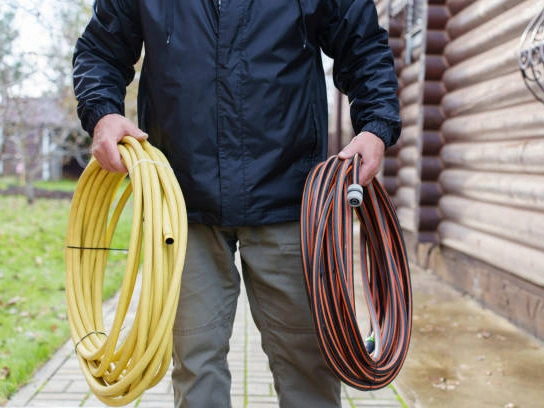
Before we dive into the specifics, it’s important to understand that “hose size” is a combination of three critical specifications: inner diameter, length, and pressure rating. Each of these plays a vital role in the performance and safety of your pressure washing system. Matching these factors to the needs of your machine and your cleaning tasks is the first and most important step. We’ll break down each of these components to help you make an informed decision.
Inner Diameter: The Key to Water Flow
The inner diameter of a pressure washer hose is one of its most important characteristics. This measurement, typically ranging from 1/4″ to 3/8″, directly impacts the volume of water (GPM) that can flow through the hose. A larger diameter allows for more water to pass through, which is crucial for machines with a higher GPM rating. A hose that is too narrow for your pressure washer can restrict water flow, causing a significant drop in pressure and potentially damaging your pump. Here’s a quick guide to help you choose the right diameter.
| Inner Diameter | Best For | Typical GPM Range |
| 1/4″ | Light-duty residential electric pressure washers. | 1.0 – 2.0 GPM |
| 5/16″ | Medium-duty gas pressure washers. | 2.0 – 3.0 GPM |
| 3/8″ | Heavy-duty and professional gas pressure washers. | 3.0+ GPM |
Hose Length: Finding the Right Balance
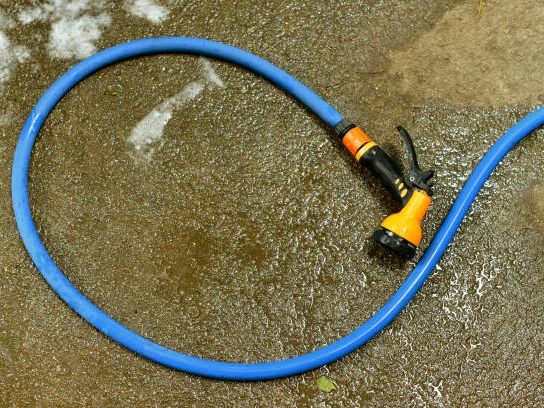
The length of the hose is a critical consideration for both reach and performance. A longer hose offers greater convenience, allowing you to clean a larger area without moving the pressure washer. There’s a trade-off: a longer hose will cause a drop in pressure due to friction.
For most residential use, a 50-foot hose is a great compromise, offering ample reach with minimal pressure loss. For larger properties or professional use, a 75 or 100-foot hose may be necessary, but be aware of the potential for a more noticeable pressure drop.
Hose Pressure Rating

The pressure rating, or PSI, is perhaps the most critical safety feature of your hose. This number indicates the maximum amount of pressure the hose can safely handle. Your hose’s pressure rating must always be equal to or greater than the maximum output of your pressure washer’s pump. Using a hose with a lower rating is extremely dangerous and can lead to a catastrophic hose failure. We strongly advise checking the pressure rating stamped on the hose itself and never exceeding it.
- Check the label: Always verify the PSI rating printed on the hose or its packaging.
- Match it to your machine: Ensure the hose’s PSI rating is higher than your pressure washer’s maximum output.
- Consider burst pressure: Some manufacturers also list a “burst pressure” rating, which is typically 3-4 times the working pressure for added safety.
Hose Material: Durability and Flexibility
The material a pressure washer hose is made from impacts its durability, flexibility, and resistance to kinking. Choosing the right material is key to a hassle-free and long-lasting experience. While more affordable PVC hoses might seem appealing, they often become stiff and are prone to kinking. A high-quality hose made from rubber or a hybrid material will offer greater flexibility, durability, and resistance to abrasion.
| Material | Pros | Cons |
| PVC | Inexpensive, lightweight, good for light use. | Prone to kinking, stiff in cold weather, less durable. |
| Stiff, heavy, and can be expensive. | Flexible, durable, resistant to kinking and weather. | Heavier, can leave scuff marks on some surfaces. |
| Polyurethane/Hybrid | Lightweight, durable, flexible, and resistant to kinking. | More expensive than other options. |
| Steel-Braided | Extremely durable, handles very high pressure, abrasion-resistant. | Stiff, heavy, can be expensive. |
Connections and Fittings: The Right Fit is Essential
The type of connectors on your hose is also a part of its “size.” The most common are M22 threaded fittings and quick-connect couplers. The fittings on your new hose must match the connections on your pressure washer and spray gun. An improper fit can lead to leaks, pressure loss, and stripped threads. We recommend using high-quality brass or stainless steel fittings, as they are more durable and reliable than plastic.
What Size Hose for Pressure Washer
To help you make a decision, we’ve created a simple chart based on common pressure washer types. The best size hose for a pressure washer is one that is perfectly matched to your machine’s capabilities and the specific jobs you’ll be tackling.
| Your Machine Type | Recommended Hose Specifications |
| Light-Duty Electric (Under 2000 PSI) | Diameter: 1/4” Length: 25-50 ft. Material: PVC or rubber. |
| Mid-Range Gas (2000-3000 PSI) | Diameter: 5/16” Length: 50 ft. Material: Rubber or hybrid. |
| Professional-Grade (3000+ PSI) | Diameter: 3/8” Length: 50-100 ft. Material: Steel-braided rubber. |
What Size Hose Has the Best Water Pressure?
While your pressure washer’s pump dictates the overall pressure, the hose size plays a crucial role in maintaining it. The hose’s inner diameter is key. A wider hose, like a 3/8-inch, allows for greater water volume (GPM) to flow through with less resistance. This helps minimize the pressure drop caused by friction, especially over longer distances. For most residential users, a 5/16-inch hose provides a good balance of maneuverability and performance, while professionals often opt for a 3/8-inch hose to handle high-GPM machines and maintain peak pressure.
Common Mistakes to Avoid
- Ignoring the pressure rating: This is a safety hazard. Always match or exceed your pump’s PSI.
- Buying the cheapest hose: A flimsy hose will kink easily, restrict water flow, and likely won’t last long.
- Assuming one size fits all: Every pressure washer has specific requirements. Check your manual before purchasing.
Conclusion
Finding the right size hose for a pressure washer is about making a smart and safe choice. By paying close attention to the inner diameter, length, pressure rating, and material, you can select a hose that not only works perfectly with your equipment but also enhances your overall cleaning experience. It’s a small investment that makes a big difference in both performance and peace of mind.

